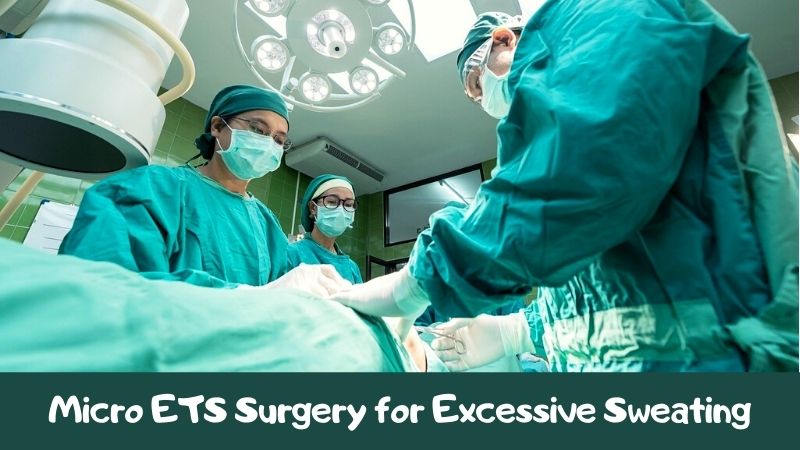
Pathological sweating greatly affects the quality of life of people, provoking regular stress, a feeling of “imperfection”. Today, you can deal with this problem with the help of endoscopic thoracic sympathectomy (ETS). This operation is indicated for pathological sweating (palmar-muscular and facial hyperhidrosis), blushing syndrome (and associated erythrophobia – fear of facial flushing), Raynaud’s disease.
In the first two cases, operations are aimed at improving the quality of life since these patients experience significant social problems, behavioral disorders, the inability to engage in certain professions, etc. however, these conditions cannot be called diseases in full measure – they do not lead to any serious irreversible consequences for the organism. In the case of Raynaud’s disease, the operation is aimed specifically at preventing complications (necrosis, ulcers, purulent diseases, etc.)
Any treatment should begin with a consultation with an appropriate specialist. Only a doctor can select an adequate treatment, and surgery is the last resort of such treatment.
According to statistics, improvement occurs in 85% of patients who underwent ETS with experienced specialists. The hairy part of the head and face can also be corrected quite successfully. The situation with the sweating of the feet is worse: surgical intervention in this area does not always provide the desired result, therefore, we recommend that patients with sweating of the feet consult a dermatologist and undergo conservative treatment, as well as use cosmetics.
In connection with the above, a patient who decides on the surgical treatment of sweating must understand that this is the most cardinal method, and it is worth resorting to it only when other, less aggressive methods have been tried and have not brought tangible results.
Preparation for micro ETS surgery involves an examination before the operation – first, it is necessary to exclude all conditions in which excessive sweating is a consequence of any underlying disease. These can be neurological, endocrinological and therapeutic disorders. Therefore, before the operation, the surgeon prescribes consultations of these specialists. If such a pathology is excluded, they proceed to the second stage – assessing the possibility of performing the operation in a particular patient. To do this, a thorough X-ray examination of the chest organs is carried out: a polypositional examination, when a radiologist under the screen examines the state of the organs from different angles, takes the required number of pictures and gives a detailed expert opinion. Spirometry is also needed – a study aimed at studying how the lungs breathe. After that, the patient undergoes tests necessary for anesthesia. At the final stage, the anesthesiologist looks at the patient and gives an opinion on the anesthetic risk.
The ETS surgery begins with the introduction of the patient into anesthesia. After the patient has fallen asleep, his or her breathing is turned off, and the anesthesiologist installs a special double-lumen tube into the trachea. Further, during the entire operation, a special ventilator breathes for the patient. They usually start on the left side. The surgeon makes 3 small incisions (5-10 mm) along the lateral surface of the chest next to the armpit, through which he or she inserts instruments and a video camera into the pleural cavity. Many specialists use gas-free technology, i.e. carbon dioxide is not additionally introduced into the cavity. On command, the anesthesiologist squeezes one of the lumens of the endotracheal tube, thereby stopping ventilation of the lung on the side of the operation. This allows visualization of blood vessels, anatomical elements and, directly, the sympathetic trunk in a calm and comfortable environment.
There are several ways to disrupt conduction along the nerve trunk:
At the final stage, the surgeon checks the hemostasis, sanitizes the operation area, monitors the expansion of the lung, which the anesthesiologist “includes” into the gas flow. After that, the instruments are removed, the wounds are sutured. And they begin to perform similar actions from the other side.
Usually, an operation with anesthesia lasts 1.5-2 hours. Upon awakening in the ward, after 4-5 hours, the patient begins to walk and eat. Before the patient leaves the clinic, an X-ray and ultrasound examination of the pleural cavities is usually performed to exclude possible complications. The patient can go home in a day.
Category: General Info
Tags: ets surgery, excessive sweating, hyperhidrosis
© 2025 www.curesweatypalms.com. All rights reserved.